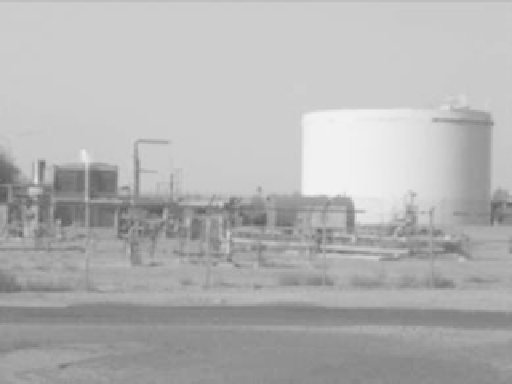Environmental Engineering Reference
In-Depth Information
FIGURE 5.9
Soil and water remediation equipment on the Williams Air Force base superfund site in Mesa, Arizona.
(Courtesy Richard A. Malloy.)
military bases had signification contamination, typically from fuel spills and dumping of
trichloroethylene and other solvents.* In the Phoenix metropolitan area, the former Williams
Air Force Base (AFB) (Figure 5.9) and Luke AFB have environmental contamination, while
in the desert areas of California, Edwards AFB, George AFB, Norton AFB, and Miramar
NAS are on the list of contaminated military bases. Several of these bases have either been
closed or are proposed to be closed and made available for redevelopment or turned into
public lands. The most typical types of contamination include soils and groundwater
containing solvents and fuel oils.
5.7.4 Superfund Sites
CERCLA, also known as the
Superfund
, provides for the cleanup of highly contaminated
sites.
†
There have been many sites in the desert Southwest that have made the list including
active and abandoned mines, manufacturing sites, abandoned sites, and military bases.
CERCLA allows for recouping the cleanup costs from the “potentially responsible par-
ties.” A contaminated site is first scored using the Hazard Ranking System (HRS) to be
placed on the National Priorities List (NPL), and this makes the site eligible for cleanup
using Superfund monies. The NPL is a list of national priorities among the known releases
or threatened releases of hazardous substances, pollutants, or contaminants and guides
determination of which sites warrant further investigation for cleanup.
The HRS uses a numerically based screening system that uses information from initial
limited investigations—the preliminary assessment and the site inspection
‡
—to score
the relative potential of sites to pose a threat to human health or the environment. The
structured-analysis approach assigns numerical values to factors that relate to risk based on
conditions at the site. The factors are grouped into three categories: (1) the likelihood that a
site has released or has the potential to release hazardous substances into the environment,
*
http://www.gmasw.com/ao_bases.htm (accessed June 25, 2010).
†
http://www.epa.gov/superfund/about.htm (accessed June 25, 2010).
‡
http://www.epa.gov/superfund/cleanup/pasi.htm (accessed June 25, 2010).


Search WWH ::

Custom Search